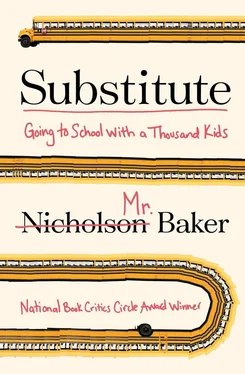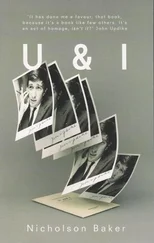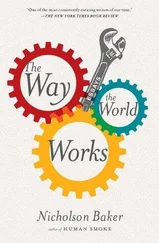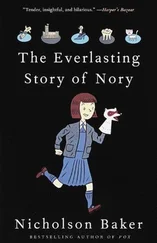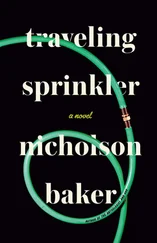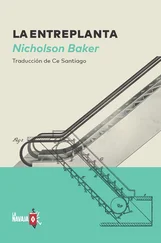DAY TWO. Monday, March 17, 2014
LASSWELL ELEMENTARY SCHOOL, SECOND GRADE
MYSTERY PICTURE
THE PHONE PLINKED AT 5:40 A.M. on Monday, St. Patrick’s Day. Lasswell Elementary School needed someone to teach second grade, said Beth, the sub caller. “I’ll do it, thanks,” I said.
On the way there I bought two glazed donuts and two medium Turbo cups of coffee — one cup for later. The elementary school, a few miles away from Lasswell High School, was a low brick building in the middle of a wooded patch, with a playground out back: swingsets and a climbing structure sitting in a white field of ice. A jolly, pink-cheeked secretary signed me in and gave me a badge that said STAFF, which I clipped to my jacket pocket. The room was warm; I was already beginning to sweat.
In room 7, Mrs. Heber, the teacher who’d called in sick, was sitting at her desk, under garlands made of looped construction paper. She had a bad cold and looked as if she hadn’t slept well; even so, she’d come in before school started to write up her sub plans and print out some worksheets. “You look like you have some experience under your belt,” Mrs. Heber said. “Have you been a teacher?” I told her it was my first time teaching at the elementary level, but both my children had been through Maine schools.
“Well, there you go,” she said. She stapled some pages together and handed them to me. I read a sentence: “Have the kids add ‘I Found a Four Leaf Clover’ to their fluency binder’s table of contents.” Mrs. Heber showed me the math activity worksheet, a grid of squares with an accompanying color key. “This is a little confusing,” she said. “The kids won’t have seen this before but it’s really fun. As long as you get it, they’ll get it.”
“I hope you feel better,” I said. “Thanks for preparing everything so well.”
“Good group of kids,” Mrs. Heber said. “I haven’t told you about my little handfuls. My two handfuls are Parker and Benjamin. Keep an eye on those two — they’ll try to get silly.” She wished me good luck and left.
I drew up a seating chart to try to learn the children’s names beforehand, gave up, and looked around, trying to get my bearings. The desks, made of wood-grain Formica, were tiny, arranged in a large square, with handwritten names taped to the tops — I’d forgotten how small second-graders were. The chairs were made of maroon plastic and they were stacked around the edges of the room, which had gray carpeting. The walls were crowded with a bewilderment of sights — calendars, headphones on hooks, yellow cardboard clocks with movable hands, a number strip that went around the ceiling, letter diagrams, a cartoon of parts of the body, a poster saying “How Do You Feel Today?” with pictures of children in various states of emotion, hand-crayoned figures of “ROOM HELPERS” mounted in plastic pouches against an electric-orange background. There was a bright yellow bookcase stuffed with a kaleidoscope of kids’ books, and a green chalk blackboard superimposed with pastel Post-its and charts with primary-colored stickers going down the side. Behind Mrs. Heber’s desk hung an intricate “Taxonomy of Educational Objectives,” colored pink, aqua blue, pale green, and violet, with sub-objectives spelled out in rectangles. Under “ANALYZING KNOWLEDGE” was a box that said:
Analyzing Errors
in Reasoning
Identify logical
or factual errors
• Question the validity of
• Listen to insure
• Assess
• Expose fallacies in
Listen to insure? I started to get nervous — I couldn’t take it all in, and I didn’t know where anything was. Just then the teacher next door popped in to say good morning. “If you need anything let me know,” she said. “They’re a good group of kids, but they’re very social. They love to talk.”
“If you hear an uproar coming from this room,” I said, “I’m sorry.”
“Oh, you’ll hear me, too,” she said, which made me feel better.
A bell rang — an old-fashioned bell with a real clapper — and children began arriving in ones and twos. I said hi and they shyly said hi. Backpacks were hung on hooks, snowpants were removed, chairs were unstacked and distributed. “You guys really know what you’re doing,” I said.
“You’re really tall,” said one tiny girl, Anastasia — she was wearing several strings of green plastic beads in honor of St. Patrick’s Day. Bryce, a tiny freckled boy, pulled out a chapter book from his backpack and told me he’d finished it last night— The Lightning Thief . I congratulated him. I’d forgotten that kids could have freckles. I found a stub of chalk and wrote “Mr. Baker” on the board.
I asked Anastasia if now was the time when I should pass out the four-leaf-clover poem for their fluency binders. “You have to ask the paper passer,” she said. I asked who the paper passer was. “Tessa, but she isn’t here yet.”
Some children’s voices came over the PA system, reading the date and the weather forecast in singsong unison. They told a knock-knock joke that I couldn’t make out. The principal came on to announce several birthdays and to congratulate a team of Lasswell Elementary students who’d won an Odyssey of the Mind tournament over the weekend. Nobody in the class listened. Then, on cue, everyone grew quiet and serious and put their hands on their chests, and we said the Pledge of Allegiance together.
“Hi, everybody, I’m Mr. Baker, I’m the substitute,” I said. “Is the paper passer here?” Tessa dashed over and began passing out the poem. A minor problem arose: normally poems destined for the fluency binder were copied onto three-hole paper, but this time, as several children told me, they lacked holes. “Oh, no,” I said.
“I know where the hole puncher is!” said Anastasia. She rummaged on a side table covered with heaps of art supplies until she found it. The hole puncher began traveling around the room, punching holes in the four-leaf-clover poem, leaving a flutterment of paper dots on the carpet. A boy asked me for a Band-Aid — he had a red patch on his leg where he’d fallen on a snowdrift. “I’m so sorry,” I said. “I think if you just let it air-dry and don’t mess with it, probably that’s the best thing you can do.”
A plump girl with a kind face and pink shoes, Cerise, helped me take attendance — five students were sick that day, and two were there but were in a remedial math class. Another girl helped me take the lunch count — how many kids were getting a hot lunch, how many were getting SunButter and jelly, how many had brought their own lunch. When everyone had written the title of the poem in their table of contents and clicked their three-ring binders closed, it was time, according to the sub plans, to line up to go to Monday morning assembly.
Carter, who was smart and officious, told me the rule: silence in the hallways.
“The boys are always less good in the hall,” said Ellie, who was also smart and officious. We processed, fairly silently, in a line to the cafeteria, where a murmuring crowd of children sat on the floor. The teachers stood against the wall; at a certain moment all of them raised their hands, holding up two fingers, and the assembly went quiet. In the front, a woman used a bucket and some milk cartons to show how many quarts were in a gallon and how many pints were in a quart. “Now, how many pints in a gallon?” she asked.
Two!
Eight!
Four!
A reading enrichment teacher read a poem by Natasha Wing, based on “’Twas the Night Before Christmas.” It was about some children who catch a leprechaun in their house on the night before St. Patrick’s Day: “They set all the traps round the room with great care / In hopes a wee Irishman soon would be theirs.” The children stare at the captive leprechaun so that he won’t disappear, and they demand that he tell them where he’s hidden the gold. He tells them that it’s buried under a rock in the back yard. But the leprechaun is a trickster: no gold for the children. End of poem.
Читать дальше
